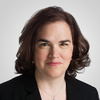With a positivity rate of 12.3% on the entire island of Montreal over the past 28 days, is school attendance, which remains compulsory, safe?
Posted on January 8, 2021 at 5:00 a.m.
–
–
The positivity rate is one of the most important indicators: it represents the number of people who are declared positive compared to the number of tests carried out in a day. Beyond 3%, the World Health Organization estimates that regional containments or other measures are necessary.
However, for the last 12 days, the positivity rate in Anjou reached for example 16.7% and in Montreal-North, 18% as of January 5, according to the website of the Montreal Public Health.
Because the pandemic shows no sign of slowing down in Ontario, Premier Doug Ford has decided that schools in the southern part of the province will remain closed until January 25. Among other factors of concern in Ontario is the significant increase in this positivity rate among children aged 4 to 11 years.
At the end of November, it was 5.22% in the province for this age group. By the end of December, it had jumped to 15.66%.
In New York, the teachers’ union is calling for the closure of schools if the positivity rate continues to be around 9%.
On social networks and in the reports of the last few days, parents are divided, some worrying especially about school delays, others, especially about the risk of transmission at school.
Checked with the Ministry of Education, the government requires as from the beginning a doctor’s note for children who will not return to school.
On Thursday, it was not possible to obtain the perspective of the Direction de santé publique de Montréal on the start of the school year. On Twitter, its director, Mylène Drouin made a general statement, saying that “we all have the same reason to respect the new measures: to end the pandemic!” “.
The worst case scenario?
Benoît Mâsse, head of the Applied Clinical Research Unit at CHU Sainte-Justine and professor of public health at the University of Montreal, does not hide that he would have preferred schools to remain closed for two more weeks.
In December, he recalls, with a colleague, he submitted nine scenarios to the National Institute of Public Health of Quebec. Of the nine scenarios, “the worst happens”.
However, he is aware that school delays are a concern and, yes, his children will be returning to class. With teenagers, he notes, “the school at least offers some guidance. If they’re not at school, they walk around the neighborhood. »The Dr Alex Carignan, microbiologist and infectious disease specialist at the CIUSSS de l’Estrie-CHUS and professor at the University of Sherbrooke, believes that “the fact that more students will have to wear the mask and that the vaccination should speed up should help a lot”.
Hopefully ventilation is on point in schools, because a significant proportion of outbreaks have occurred there.
–
The Dr Alex Carignan, microbiologist and infectious disease specialist at the CIUSSS de l’Estrie-CHUS
–
But he insists: at school as in hospitals and CHSLDs, the best ventilation can do nothing if physical distancing is not respected. The aerosols we are worried about are essentially short-range, recalls Dr.r Carignan.
A hot model from the Centers for Disease Control and Prevention in the United States also calls for increased discipline over masks and physical distancing. According to this model, 59% of all transmissions would originate from a person without symptoms.
On December 23, the European Center for Disease Prevention and Control (an agency of the European Union) wrote that school closures should be decided as a last resort. As other studies have pointed out, closing schools alone has little effect on the transmission of the virus. But the European agency specified that its opinion did not take into account the new variant whose effect on transmission is still unknown.
A question that divides
The question of schools divides everywhere. In Quebec, the teachers’ unions are in favor of opening them up, unlike those in New York (the governor of New York, Andrew Cuomo, for his part, is resolutely in favor of in-person teaching).
Among physicians, both in Quebec and Ontario, there is no consensus either, and medical associations have not yet published new official notices on the opening of schools.
A stir in the Prime Minister’s office
According to an article in The news Thursday, senior public health officials – Drs Horacio Arruda and Richard Massé, in particular – reportedly did an about-face on Monday evening. Until then, they would have estimated that a plateau had been reached, at 2,500 cases, which François Legault did not believe, given the lower number of tests carried out during the Holidays.
Monday evening, Public Health would have completely changed course, estimating the situation uncontrollable and saying that a total containment – including schools – was necessary. That Public Health changed its opinion completely at the last minute would have displeased and forced the postponement of the press briefing, initially scheduled for Tuesday.
Quebec Public Health declined to comment on this article.
At the Prime Minister’s office, we were told in writing that “it is quite normal for discussions to be intense in times of crisis like the one we are currently experiencing. […] We have complete confidence in Public Health. They are the experts and we will continue to listen to them. ”
–



